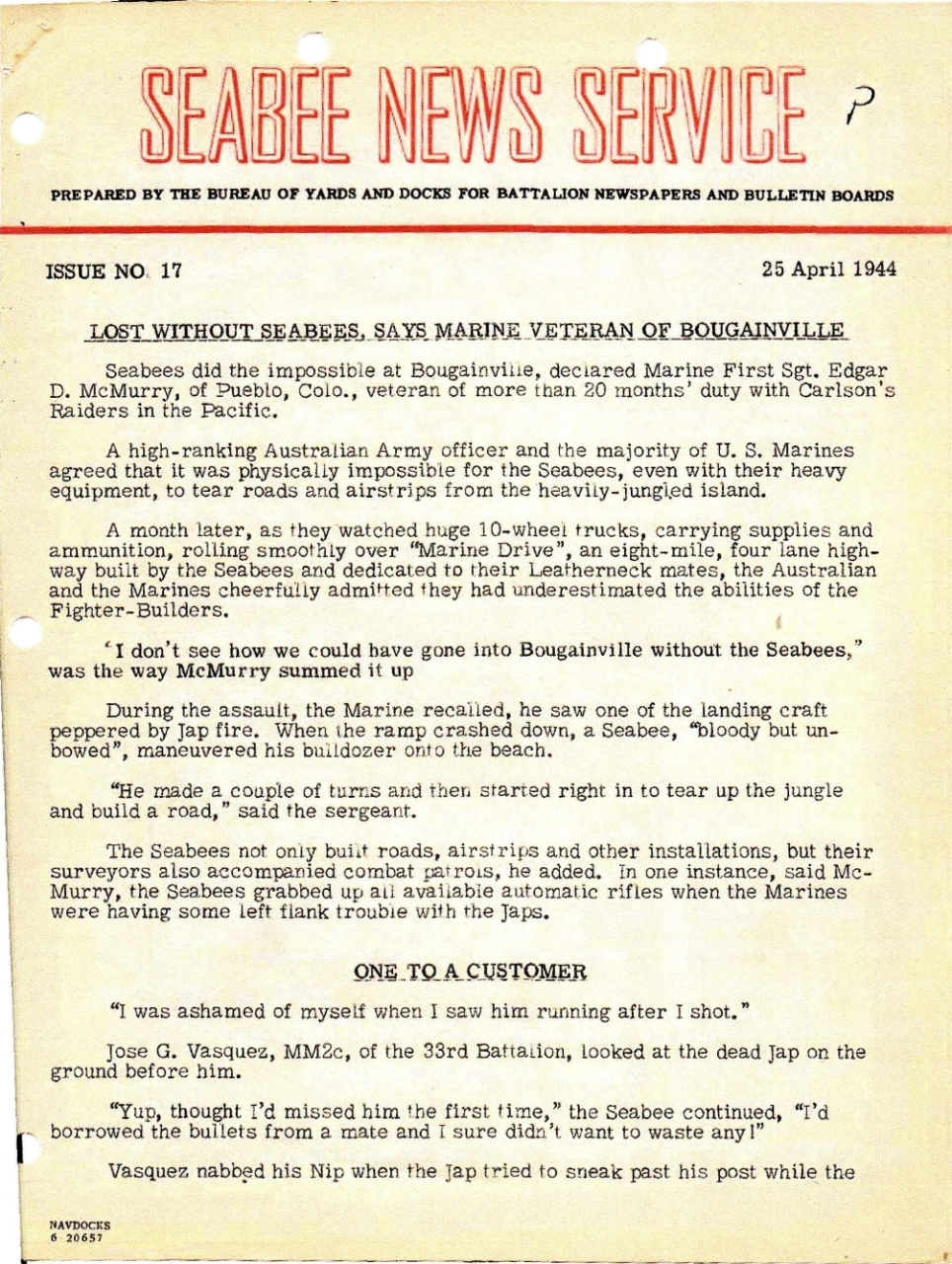The SeabeeGram Volume 2, May 2021
The SeabeeGram Volume 2, May 2021 [PDF, 3.1 MB]
Museum News
The museum is pleased to announce it will start to gradually reopen on June 2nd.
To help ensure physical distancing and a safe, comfortable experience, we will be limiting the number of visitors in the museum to 60 visitors and will only be open Wednesday through Saturday from 10am to 4pm.
The U.S. Navy Seabee Museum will be reopening with the following visitor guidelines in place:
- In accordance Navy guidance, mask wear for fully immunized personnel (two weeks beyond final dose) is no longer required indoors or outdoors at DoD facilities.
- Immunized visitors should continue to comply with Centers for Disease Control and prevention guidance regarding areas where masks should be worn.
- Please do not enter the museum if you feel sick or have a temperature over 100 degrees.
- Exhibits require one-way foot traffic flow.
- The STEM Bee Fun Zone is temporarily closed.
- The Seabee Museum Archive Reading is temporarily closed to researchers.
- The Seabee Museum Store is temporarily closed.
- In-person tours available for groups of 10 or less; make a reservation.
- Military Events and Ceremonies for groups of 35 or less; make a reservation.
- USNSM does not accept unsolicited on-site drop-off of historical material donations.
For the most updated visitor information, follow the museum on Facebook or visit the museum’s website.
Director’s Notes
I did not think it would be possible to top, but the second edition of The SeabeeGram is as exciting as the first. One of the most thrilling things the museum gets to share in this newsletter is the announcement about the reopening of the museum. Even though the museum facility has been closed to visitors since March 2020, the museum staff has been providing “virtual” Seabee history to the public. The museum posts daily on both Facebook and Instagram. One of the more popular daily posts is called “Caption This” which shares a historical Seabee photo and engages followers to add their own description. The museum’s collection staff has taken advantage of the open galleries to conduct a comprehensive inventory of the artifacts on exhibit. This year marks the 10th anniversary of the new museum facility. In commemoration, the exhibit team has been working on an exhibit called “Breaking Ground: Transforming the U.S. Navy Seabee Museum” that explores the history of the museum from its humble beginnings in 1947 through the Quonset hut years and the present day.
The second inspiring part of this newsletter is the inclusion of an historical article about the Seabees role in Operation Provide Comfort (OPC). Starting in April 1991, in the aftermath of the First Gulf War, the United States and other Coalition nations initiated Operation Provide Comfort, military operations to defend Kurdish refugees fleeing their homes in northern Iraq and to deliver humanitarian aid to them. In this issue CAPT Don Hutchins, CEC, USN (ret), the Commanding Officer of NMCB 133 from 1989 to 1991, shares his firsthand experience of what the Seabees did to support the Kurdish refugees. Despite the value of their work in improving the human condition, the Seabees received minimal contemporary recognition for their accomplishments. Today, the museum has nothing on exhibit and little in the collections related to the Seabees support of OPC. Until now, it has been an untold story. One of the purposes of publishing this newsletter is to capture some of these untold stories, especially the more contemporary ones preferably from those who experienced it firsthand. CAPT Hutchins has not only voiced the untold story of the Seabees in Operation Provide Comfort, but he has done it in a well-written, colorful, and very Seabee way! Also included is the poem “The Kurdish Catastrophe” written by CM2 Douglas Lanning who also served in NMCB 133. CM2 Lanning first recited this poem in May 1991 while in Zakho, Iraq. It serves as a heartfelt reminder of what it must have been like to serve as a Seabee helping the Kurdish refugees and echoes the motto inscribed on the Seabee Memorial: “With compassion for others, we build, we fight, for peace with freedom."
Happy history hunting,
Lara Godbille, Ph.D.
Director, U.S. Navy Seabee Museum
Naval History and Heritage Command
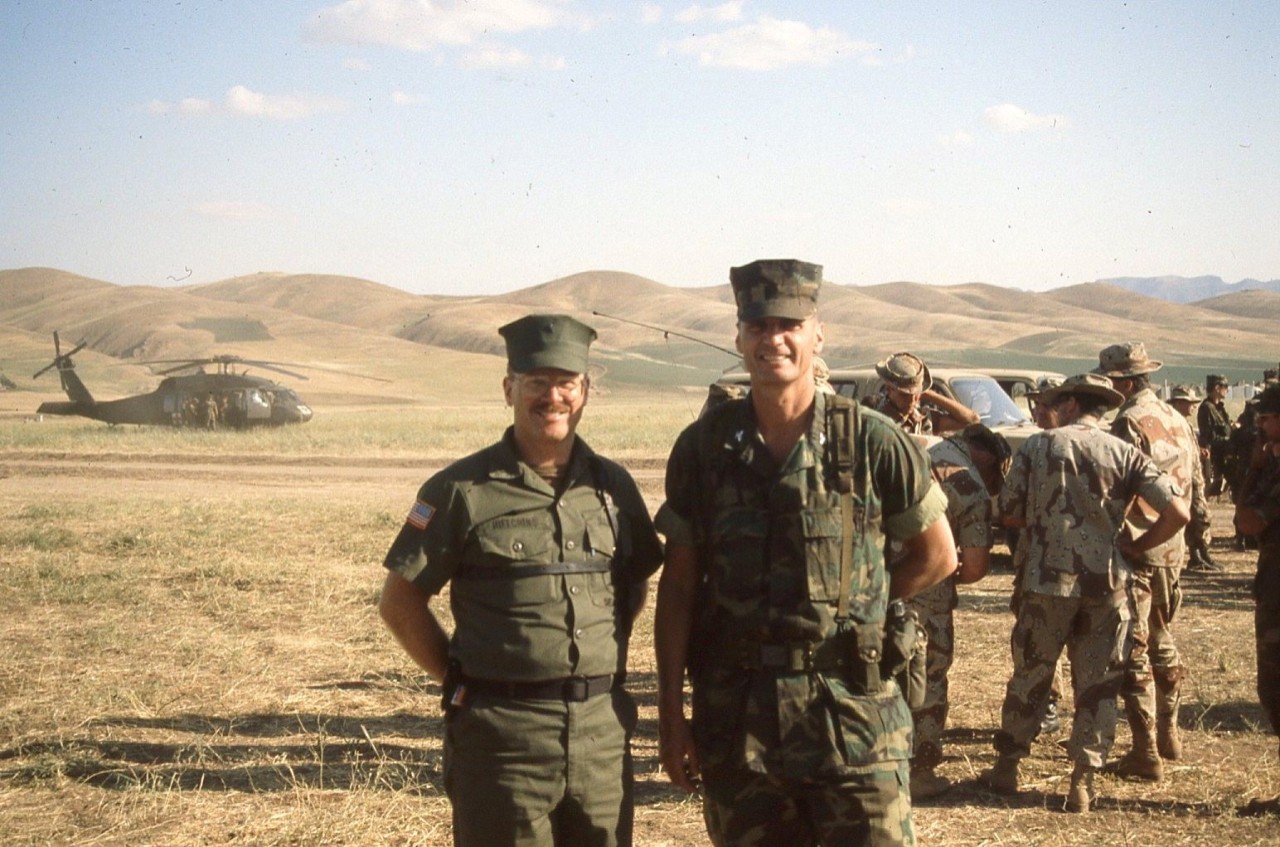
The Red Rats of NMCB 133 go to Iraq and Back with Operation Provide Comfort, April-July 1991
by CAPT Don Hutchins, CEC, USN (ret)
Prologue
NMCB 133, the Kangroo Battalion (fondly known as the Red Rats), were deployed to Guam, preparing to be relieved by NMCB 7 when the First Iraq War broke out in August 1990. The Rats assisted NMCB 7 to load out the Guam TOA (Table of Allowance)* to Kuwait in lieu of the normal NMCB deployment site turnover process. NMCB 133 then redeployed to Gulfport and began training for what they expected would be a wartime deployment to Kuwait or Iraq in March 1991.
The Gulf War ended abruptly in February 1991 with the collapse of the Iraqi Military, and the Red Rats’ next deployment shifted back to Camp Mitchell in Rota, Spain – continuing the normal Battalion rotation program at that time. Many Red Rats were disappointed NOT to have the opportunity to help liberate Kuwait. What they didn’t know was that they would see Iraq sooner, rather than later…
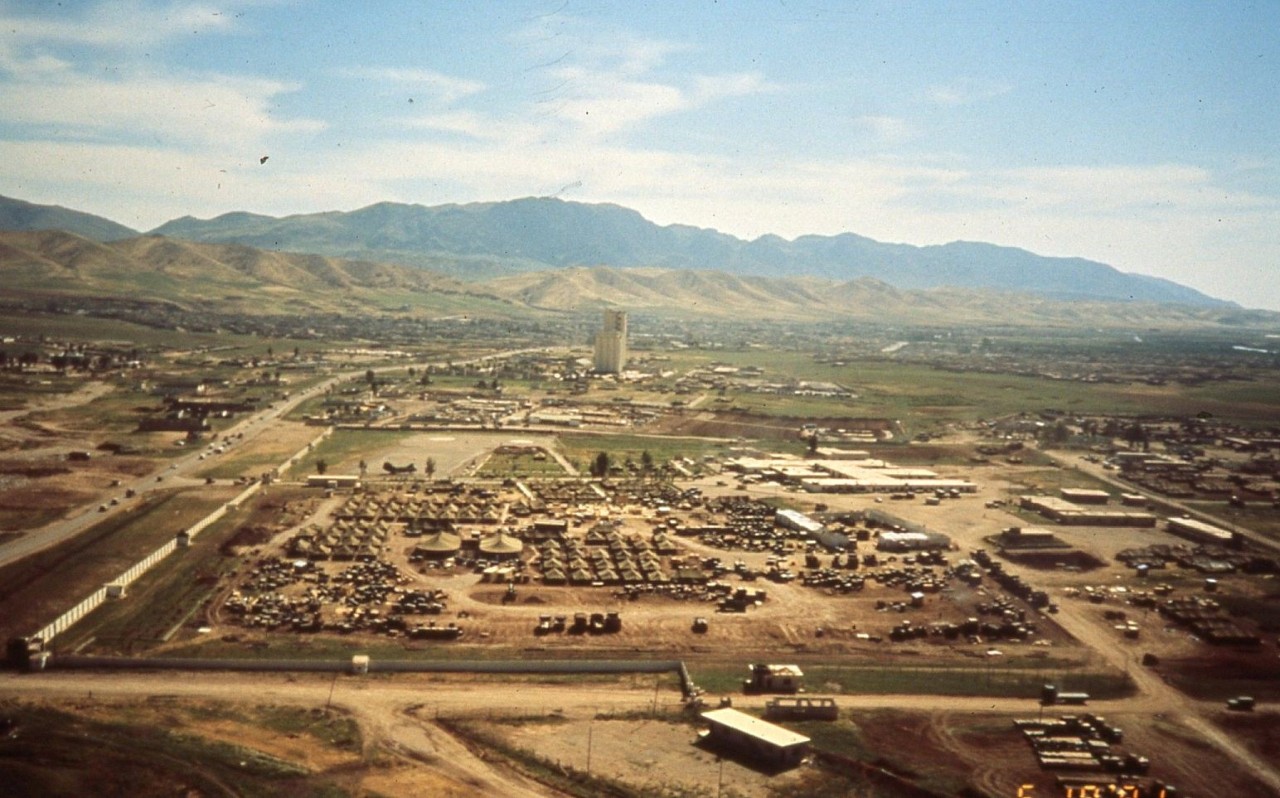
Chapter 1: We’re going to Iraq!
We had barely started our project work in Rota (with Detachments in Souda Bay, Sigonella, Edzell, Holy Loch and at Camp David, MD) when Saddam’s Iraqi Army began a campaign to eradicate the Kurdish civilian population in the North of that country. The Kurds fled into the rugged local Mountains by the hundreds of thousands, and within weeks an International Coalition had been formed to protect them, retrieve them from the mountain strongholds and house them in refugee camps near Zakho in Northern Iraq. Operation Provide Comfort was underway, and NMCB 133 was ordered by CBLANT (Commander Construction Battalions Atlantic) to mount out of Rota to Northern Iraq to assist in that operation. We called in our Detachments (Det), shipped out our Air Detachment to the theatre in Air Force C-5s, and commenced the well-rehearsed 6-day Seabee Battalion mount-out countdown.
But 6 days wasn’t happening! Right after the Air Det departed at the end of day 2, we got the word that a ship had been located and would be in Rota in 2 days. (Yikes)!
So we had a total of 4 days to mount out our Air Det AND do the 6-day Battalion mount out drill. Red Rat Can Do combined with a lot of blood, sweat and tears made it happen. Sure enough, the Ro-Ro ship tied up as advertised on day 4 – and to nobody's surprise, the Red Rats were ready for her. I don't remember how long it took to actually LOAD the Rota TOA onto the ship (that's a lot of gear). But before you could say "Do Red Rats get seasick?” all of our equipment and gear and an afloat party to keep an eye on it was on route to the port of Iskenderun, Turkey by sea.
Meanwhile the Main Body was airlifted to Turkey to meet the incoming ship. Iskenderun is the nearest port to Zakho, Northern Iraq, but there are about 500 miles of mostly dirt roads between the two places...
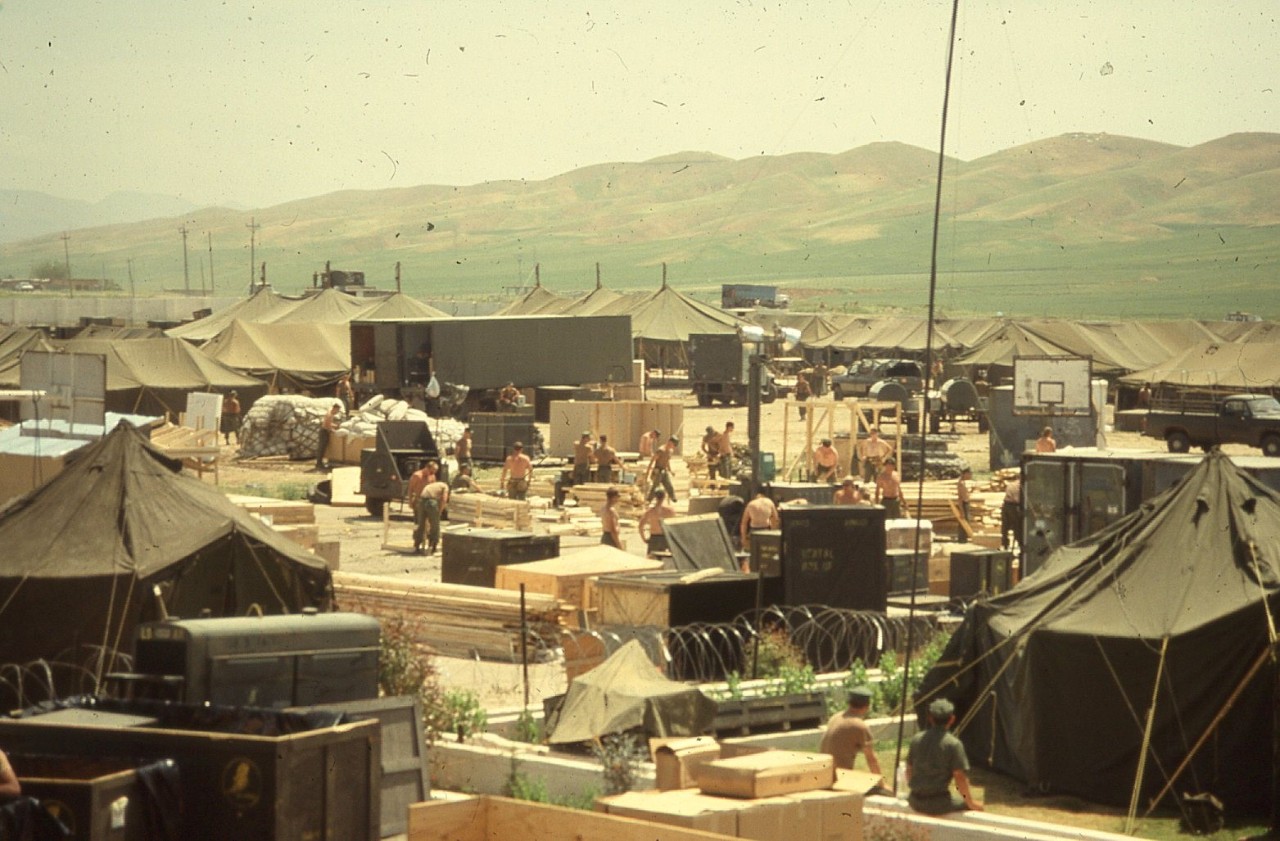
Chapter 2: You gotta get there!
So - we convoyed the entire TOA on Turkish trucking, from Iskenderun over 500 miles through Eastern Turkey to Zakho Iraq. I believe this remains the longest over-land deployment of a Seabee Battalion and its TOA ever conducted. And it sure as hell was an adventure for the Red Rats who rode security on the trucks hauling our gear. It turns out that Turkish truck drivers don't understand English – as in “WHOA! SLOW DOWN! HOLY CRAP, YOU'RE GONNA KILL US!!” This all made zero impression on the truckers. But all our stuff and all of our Red Rats made it safely to Zakho, accompanied by some hilarious “Sea stories” about 2 days riding Turkish Motor Transport.
Meanwhile – a small logistics problem ensued. We had drawn our entire wartime ammunition allowance in Rota, since we had no idea what we'd find opposing us in Iraq. Then we got to the Iraqi border and the Turkish Border Police wouldn't let us take our ammo out of Turkey. Happily, our resourceful Marine Gunny found a USMC Heavy lift Helo squadron which willingly "border hopped" our ammo into Zakho on their CH-53s.
We found our advance party co-located with the 18th Army Engineer Brigade Headquarters (we were their only substantial subordinate unit) and 24th Marine Expeditionary Unit, Special Operations Capable (MEU(SOC)) – our security – in an abandoned Iraqi Army compound we named Camp D. W. Sommers, after a young Marine the MEU had just lost to an accident. We set up our Seabee Tent Camp in the compound’s rose garden, by their flagpoles. The Red Rats proceeded to civilize the place pretty darn quick, to include our mass-feeding Circus-tent Galley and a General-Purpose Large tent full of hot showers. Our corner of the Camp Sommers compound was christened “The Zakho ‘Roo Zoo,” and became the most popular place in Zahko!
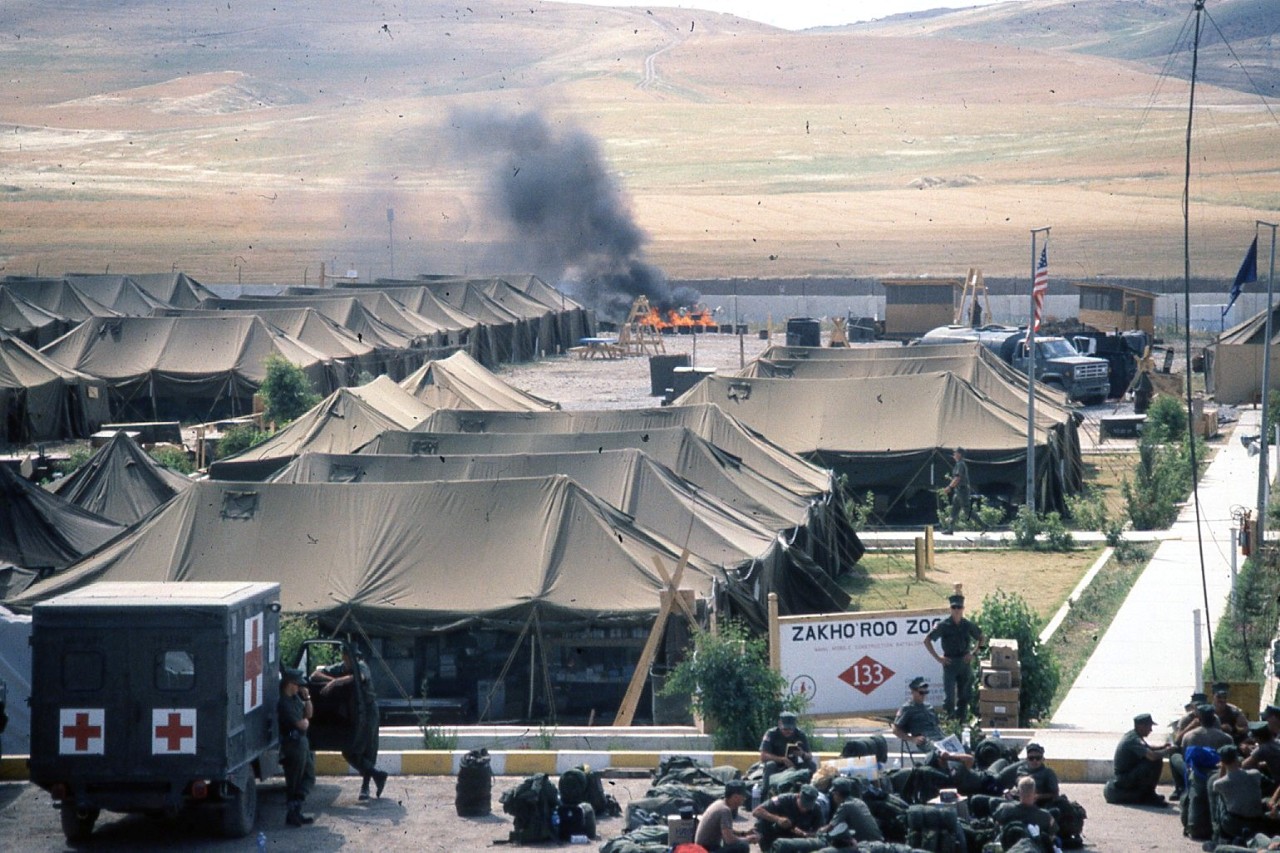
Chapter 3: Living in Zakho
The Roo Zoo was a pretty decent place to "live" if you have to be in a war zone and working six 12-hour days a week. (More on our mission in the next chapters...).
The Red Rats were all in General-Purpose Medium Tents: as I recall most were around 12 to a tent. I figured the CO's digs should be a little less crowded and set up a 4-man "executive tent" shared by me, the XO and Ops Officer plus a 4th cot which served as a VIP visitor accommodation. The big surprise was that we actually GOT a number of VIP visitors, who were all very happy to find a decent spot to sleep! Zakho was not exactly a vacation destination.
Inside the ‘Roo Zoo the "facilities" were OK. The pee-tubes were a pretty handy thing to have, IF you didn't sweat out every drop you drank. Our 4-hole burn-out latrines got a LOT of business. They were pretty god awful, but only until you considered the alternative slit-trenches that most of the units in theater were using. Funny how many folks from other units came by the ‘Roo Zoo for lunch and a potty break during the day.
In fact, the 4-holers were SO coveted that I traded one to the local Air Force Comms unit, in exchange for a dedicated AUTOVON or Automatic Voice Network line connected to the States. We installed that line in the admin tent, then we set up a schedule for our Seabees to come in at all hours of the night and “phone home" thru the DC AUTOVON Switchboard. Comm’s to home was a very rare “bennie” in Iraq in those days. I never told the Regiment or CBLant about that phone line. I didn't want or need the continuous supervision. For them we became a "fire & forget" kind of asset, which was the way I've always liked it - leave us alone and let us get our job DONE.
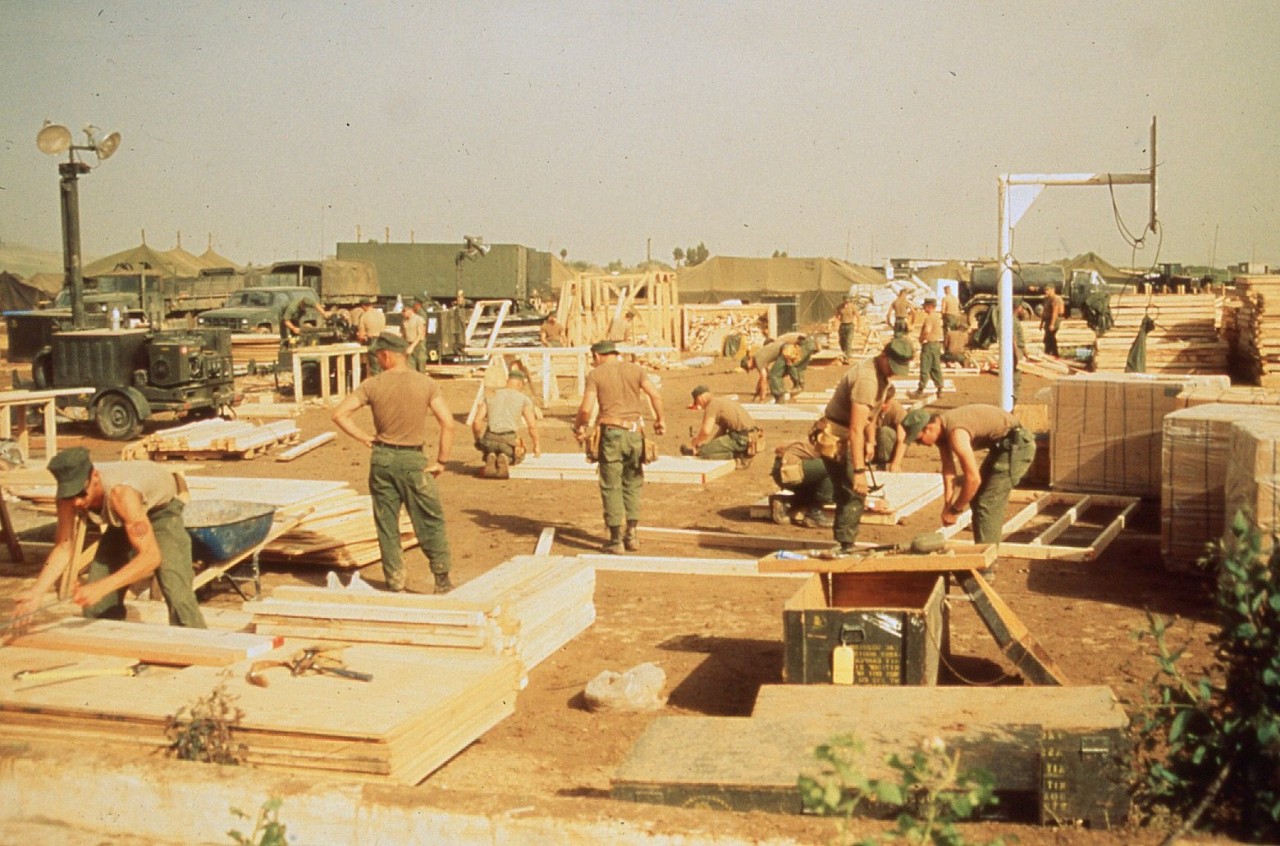
Chapter 4: Our Motto – Sh*tters are US!
Once the ‘Roo Zoo was up and running, we got busy with the two main missions of Operation Provide Comfort. First was to start hauling Kurds down into the Zahko valley from the mountains where they had fled Saddam's gas attacks. The second was to construct refugee camps to hold them all - something like 250,000 people.
While a good portion of our ‘Bees were deployed to the wheat fields of Zakho, building roads and setting up thousands of refugee tents, Our C Co. builder shop proceeded to set up what may be the largest sh*tter assembly line ever known to man. They mass-produced not just refugee camp toilets (essentially phone booths that sat over an augured hole in the ground) by the thousands, but also the famous 4-hole burn-out that was THE deluxe accommodation anywhere in theatre - to include the local Iraqis' own buildings, where the Turkish porcelain hole-in-the-ground was the accepted standard.
Our B Co folks ran the camp 4-holers, which were a huge asset to the medical crew trying to keep Red Rats healthy and on the job, rather than racked out with dysentery. B Co also set up and operated one of the two most-popular features of the ‘Roo Zoo - the Shower Tent. Those hot showers brought us evening visitors from all over the Zakho valley and were dearly loved by everybody. Except, that is, for one Army Reserve Civil Affairs Officer who came to me in my tent/office one morning smoking-hot! He had left his Rolex on the gear shelf in the shower tent, and when he went back to look for it, it was gone! Oh my goodness… Who could have imagined that? He wanted me to turn out the entire battalion and search tents until I got his watch back…
I explained to him that everybody in the Zakho valley used that shower facility, and that his carelessness did most emphatically NOT require me to disrupt my battalion’s operations. He went away one VERY angry Colonel. (30 years later one of my guys told me that he thought the watch turned up under the floor of that shower tent when we mounted out back to Rota and was turned over to MWR).
The second most-loved Seabee Camp feature was the Galley. Our Supply folks set up our “Circus Tent” which would feed a couple hundred at a sitting, and while most folks in theatre were subsisting on MRE’s, we had 3 meals a day of hot chow. And lots of visitors, as you might guess…
Meanwhile, our Air Det – the first Seabees to arrive in Country – were far East of us in Sirsink, repairing the extensive damage the US Air Force had done while bombing Saddam’s private airfield there during the Gulf War. Our guys got the runway back up and running in time for substantial logistics support to come into Northern Iraq and OPC through that airfield.
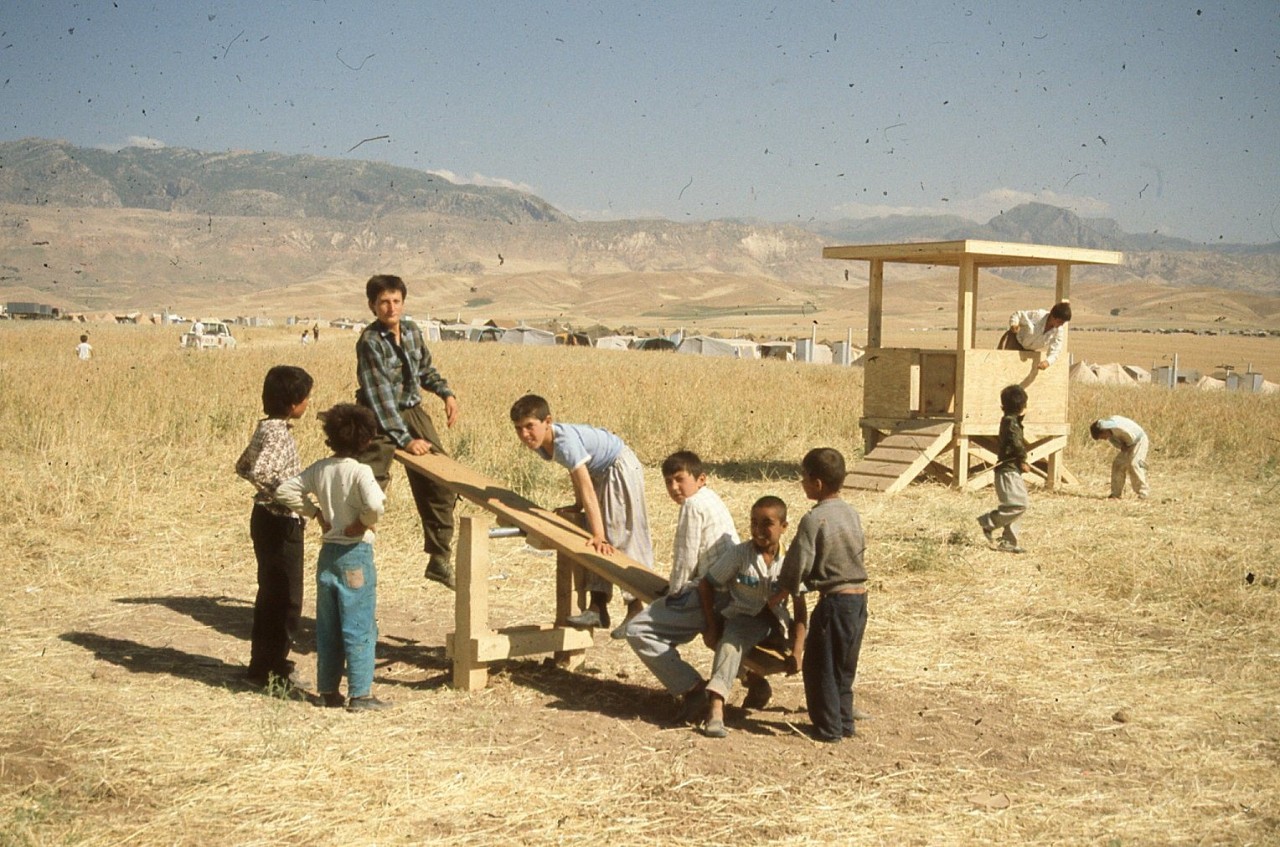
Chapter 5: It's about refugees and water...
While the Sh*tter assembly line went into mass-production, most of the Red Rats migrated out to the thousands of acres of wheat fields in the Zakho valley, to build tent camps for the Kurds coming down from the mountains.
Tents were popping up like mushrooms, roads were appearing where there had been none, and lots of Rats were getting Red (no pun) in the sun, at least until General Shalikashvili (the Theatre Commander) paid us a visit. He had apparently never seen the Seabee Memorial, and we were directed to revise our “Seabee-style” field working uniform to a more proper “shirts and covers at all times” approach.
Meanwhile the well drilling team went into the field to find water, and they and their B Co colleagues set up something like 150 water-tank facilities with gang faucets where refugees could bring their containers for potable water every day.
Our medical team deployed to the camps too, to provide medical and dental exams and basic treatment to hundreds of Kurds, many of whom had never seen a Doctor or Dentist in their entire lifetime. The Seabees’ work in the Zakho valley was literally saving lives by the thousands every day we were there.
By the end of the operation, we and our coalition partners had set up refugee camps, complete with logistics support facilities and water supplies for about 250,000 Kurds who had been rescued from their mountain hiding places during Operation Provide Comfort. We had a VERY good feeling about our mission there.
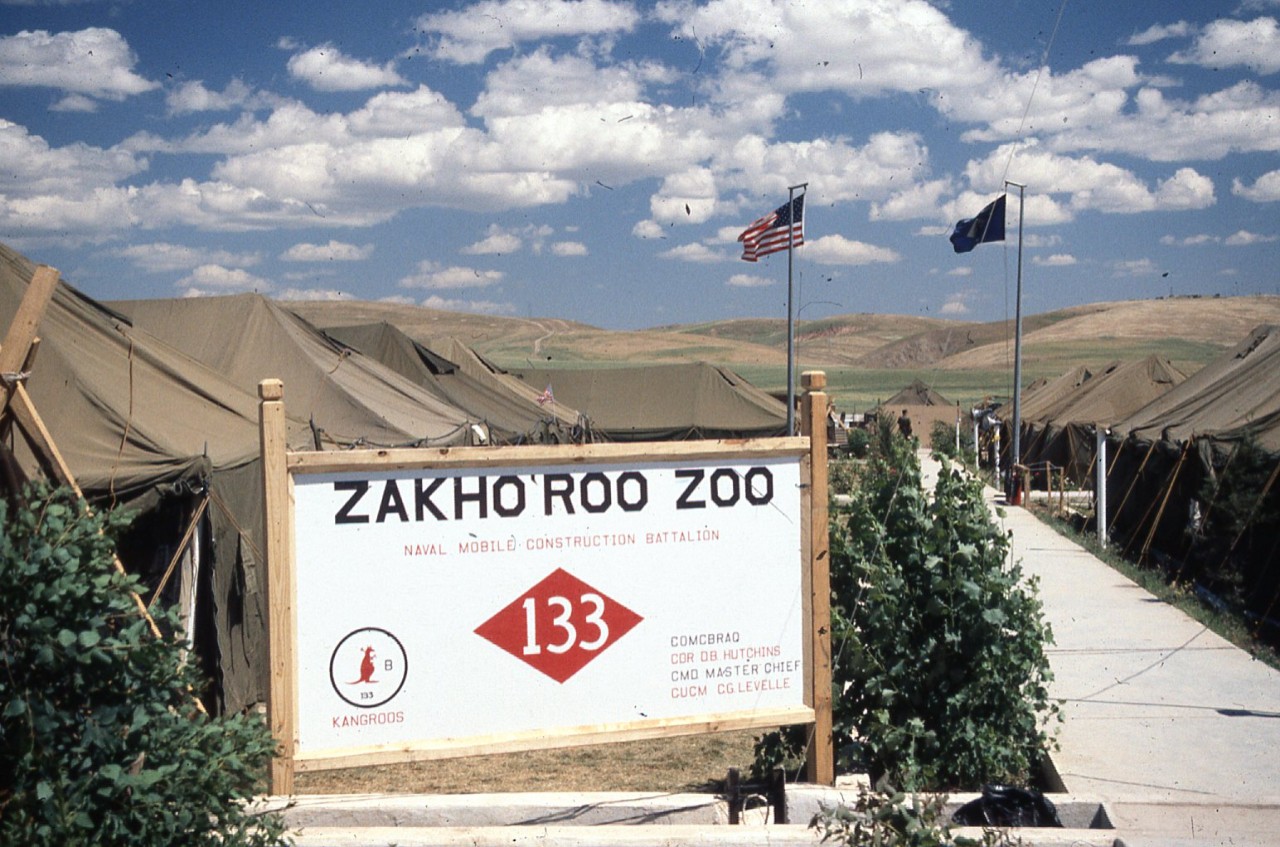
Chapter 6: We got VIP Visitors!
Since the first Gulf War had just ended, Operation Provide Comfort was the biggest game in town, and the folks in the various Head Sheds had to come see how we were doing.
We had one particular gaggle of 4-stars and other VIPs come through Zakho which included General John Shalikashvili - the Op PC Commander, and General Colin Powell, then Chairman of the Joint Chiefs of Staff. They were escorted by our compound’s Senior guy – USMC COL Jim Jones, whose 24 MEU(SOC) were our “roommates” in Camp Sommers. (Most of you will recall that Jim Jones went on to become the 4-Star Commandant of the U.S. Marine Corps and then National Security Advisor to President George W. Bush). One of my Red Rats, CM2 Doug Lanning had written an exceptional poem about what we were doing there. Lanning was invited to read his poem to that star-studded assemblage from the podium. It was the proudest moment of this Seabee CO’s career, and I’ve included that poem at the end of this piece.
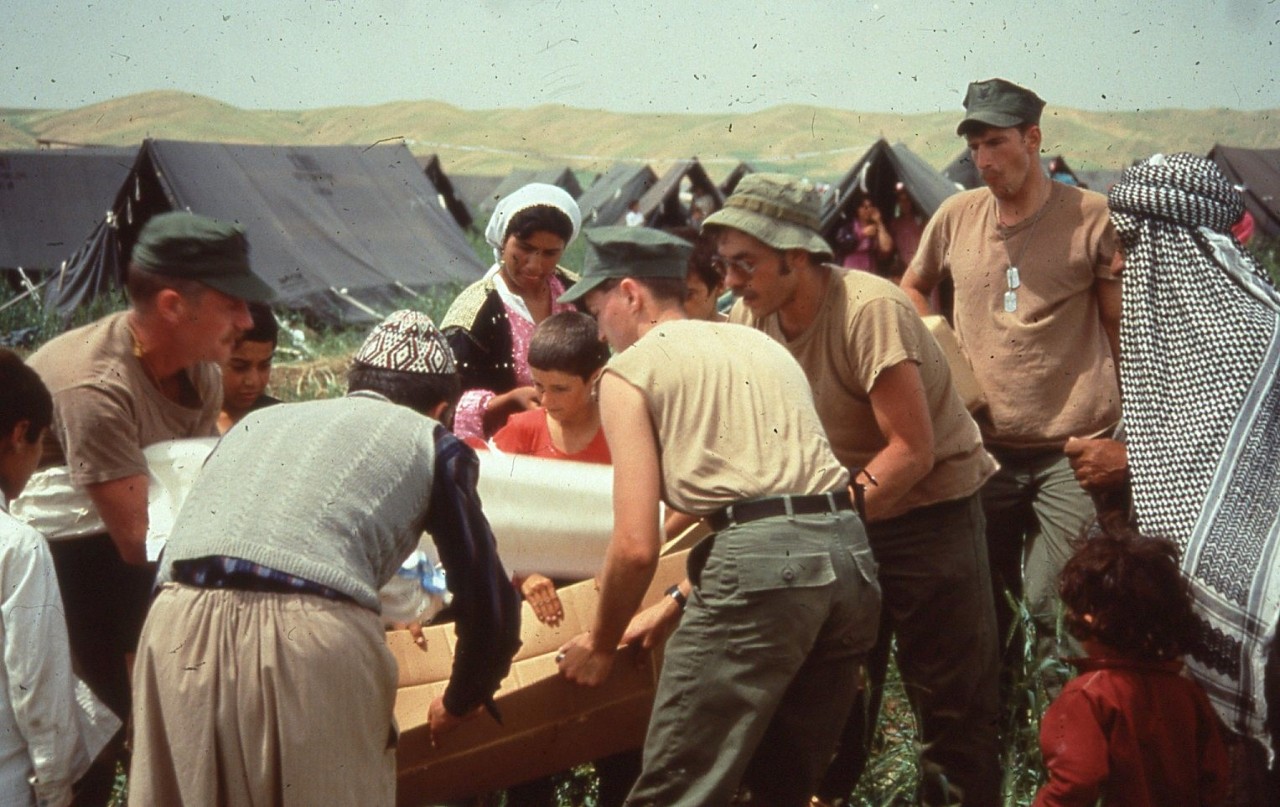
Chapter 7: Recce's
While the main body built roads, tent camps and latrines, and the Dets drilled wells, graded roads and rebuilt runways, the staff guys had some time on their hands to recce the area. Our USMC Gunny and I spend time poking into hastily deserted Iraqi Army facilities, while Ops scouted the surrounding area, some of which was amazingly lush.
I was wading very carefully through the knee-deep debris of an Iraqi Army post when I had my only real "aw-shit" moment of the deployment: The Gunny was behind me a couple of steps, and suddenly said "Oh SH*T, Skipper - FREEZE right there!" He'd just seen a pile of mortar rounds in a corner of the room, and with all the garbage spread around there was no way to tell if they'd been booby-trapped.
You can imagine that we retreated VERY slowly and carefully from that room - putting each foot precisely where we'd stepped going in! Luckily, we did not later need a change of skivvies or a blood transfusion...
We did find a lot of printed material in these posts and collected as much of it as we could bring out, assuming it might have some intel value. Unfortunately, we didn't have a single ‘Roo who could read Arabic, so we never knew what we'd found. We turned it all over to higher HQ Intel types, and it disappeared from our purview.
Chapter 8: We’re going home…
By late June, the refugee recovery and housing ops were pretty well completed. NGO outfits were taking over running the camps and resettling the refugees to their original homes, so we were ordered to pack up and head back to Rota.
It took a LOT longer than 4 days to get the camp broken down, all the equipment cleaned to US standards, and to organize our “retreat”. But it did get done in due course, and in July we were on our way home. We resumed our peacetime project load in Rota and the Det sites, and by the time of my Change of Command in September, Iraq was receding quickly in our rear-view mirrors.
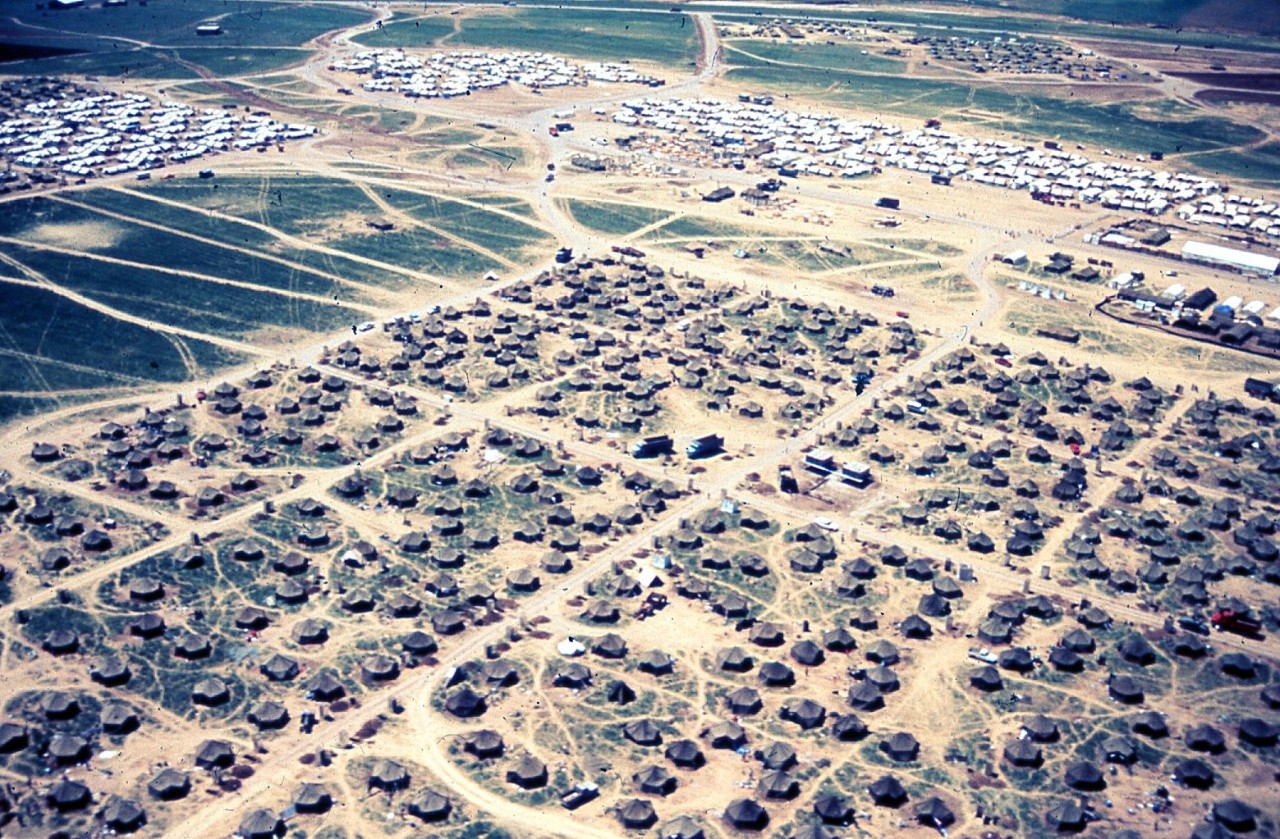
Chapter 9: The REST of the Story...
There were two unique aspects to our OPC deployment, which can now be told, though neither was very funny at the time. While packing out the Rota TOA, we liquidated our MWR funds and brought an entire reefer container full of beer, expecting to run an MWR “happy hour” beer bar in camp. That plan was brought up short by GEN Shalikashvili’s “General Order #1” for OPC, which hit the street just as we were pulling away from the Rota pier. As the US is prone to do lately, this order prohibited the consumption or possession of ANY alcohol in theatre - making me a UCMJ criminal the minute we crossed the Iraqi border.
Our in-country Boss, U.S. Army Major General Jay Garner was a big supporter of our work there, and I needed some higher “cover” for that reefer of beer. So I invited General Garner to our Galley tent one evening for a decent meal, and broke the news to him that “we” had a beer problem. He told me basically to “wait, over”... Two months later as we were winding down the operation, I went back to him with a proposition; we would throw a U.S. Army Birthday Picnic in the Roo Zoo on June 14th. We would invite all the multinational units in the Zakho Valley, and we would sell that beer to attendees, keep the “party” within our walls, and solve the problem quietly that way. And he agreed! That decision gave our MWR fund a big cash infusion that went to prizes for Red Rats and their families at our homecoming picnic that fall.
The second issue was the ammo. As noted earlier, the Turks never allowed us to bring our wartime ammo load across the border into Iraq. So after we flew it in on Marine helos, it didn’t officially exist as far as Turkish Customs was concerned. We only shot up a few rounds while we were there, and were stuck figuring out what to do with the rest as we headed home. The same Turkish Customs, which wouldn’t let it OUT of their country, certainly wouldn’t let it back IN to go back to our ship.
Our Gunny came to the rescue again, and arranged for the local EOD Team to put the stuff in a big hole and blow it all up. It made for a pretty cool fireworks show, I can tell you! And with that problem solved, we shipped out for Rota. But apparently, Iraq wasn't finished with me...
I ended my Navy career several years later, retiring from the position of Seabee Program Manager in the Pentagon. A month or so before retirement, I got a visit from NCIS. It seems they were looking for a couple million bucks worth of missing munitions that I had signed for from the Rota Armory. It had never made it back to Rota, and they were pretty sure that I must have disposed of it on the black market in Iraq!!!
I told them what had happened to it, and they asked if I could prove it? Hmmmmm...
We hadn't exactly asked EOD for a receipt for the stuff, so I was pretty well stuck. I sent them to find the Gunny (I don't remember now where he'd gone by then) to back me up. I never heard from them again, so I guess my favorite Marine must have covered my butt one last time. Thanks for everything, Gunny!
And now you know the REST of the story...
Notes:
*The Table of Allowance equipment for a Seabee Battalion in those days was on the order of 325 pieces of Construction Equipment and vehicles, plus an enormous amount of materials and supplies to enable the battalion to operate autonomously in a hostile theatre for an extended time. It takes a good-sized cargo ship to move one Battalion’s TOA. Each overseas deployment site houses one Battalion TOA, which is ready to be deployed on 6 days’ notice.
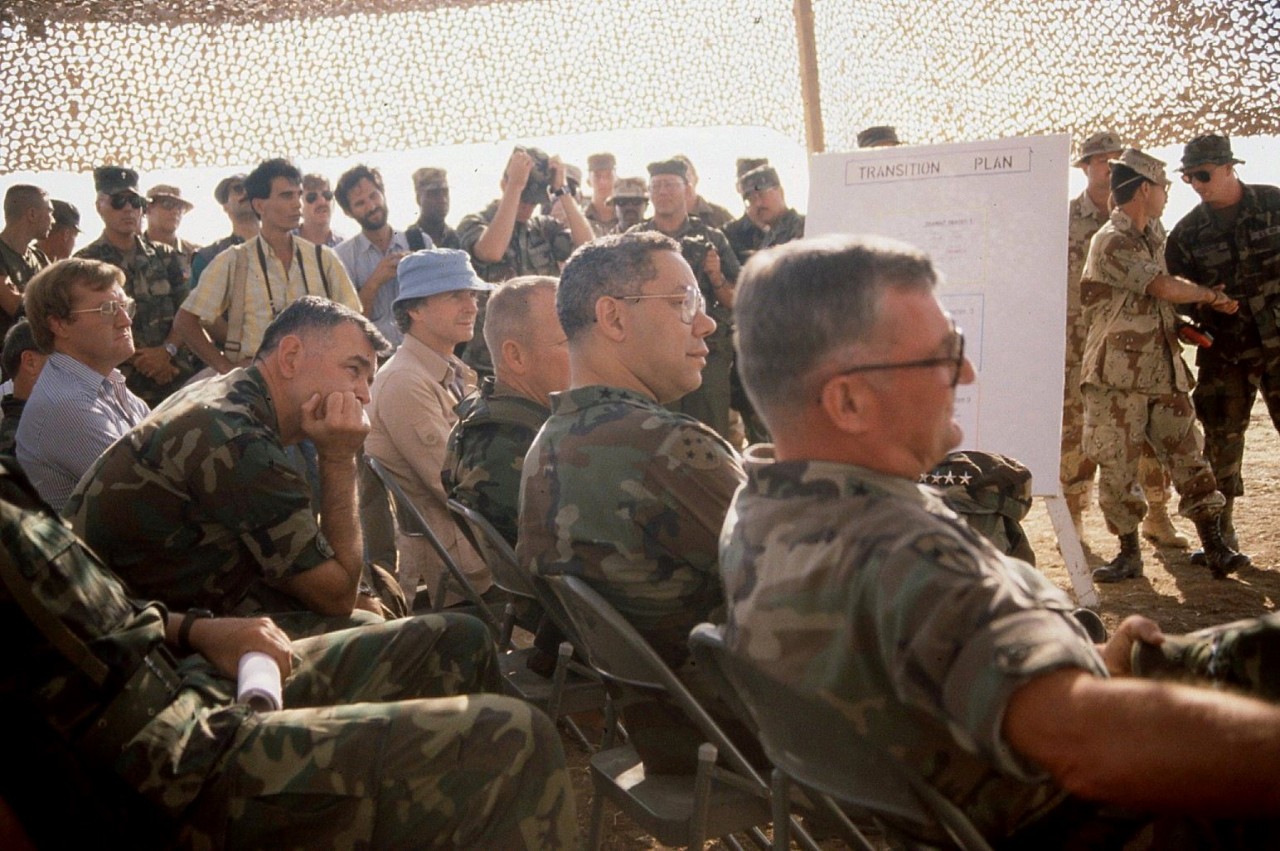
The Kurdish Catastrophe
By CM2 Douglas Lanning, NMCB 133, May 1991 - Zakho, Iraq
I can’t explain all that I’ve
seen, but will do my best to
say what I mean.
The glow on their faces is
almost enough, but you can
still tell they’ve had it rough.
You look around, it seems so
unreal, and you try to
imagine how they must feel.
We came to provide comfort
to the people here, they
seem to trust us, it’s him
they fear.
The leader of so many,
Saddam Hussein, has
caused their suffering, and
their pain.
From the land mines that he
planted all over the place, to
the napalm burns and
blisters on a young child’s
face.
From the people living out in
the street, to the ones in
town without power or heat.
From the people washing
clothes in the muddy waters,
to the many who had to
bury their sons and
daughters.
You see a child selling
whatever he can, all of this
and more because of one
man.
I know it’s hard to believe, but
it’s really all true, think
about it a second, I’m not
even through.
I’ve been to the hospital to
visit a small boy, who
picked up a hand grenade,
thought it was a new toy.
You cannot blame him, he’s
just a curious kid, I still
remember vivid what his new
toy did.
I really can’t believe they were
able to save his hand, then I
also can’t believe this was
once a beautiful land.
The mountains from a
distance, an eye-catching
sight, they really are
beautiful with their snow
caps of white.
It’s just sad to think of all the
people up there, a quarter
million people, but he
doesn’t seem to care.
When our operation is finally
through, I cannot help but
wonder what the people are
gonna do.
Will they go on living the way
they were before, or will the
one man, their leader, kill
even more.
I guess that is something only
time will tell, from my
observations, they’ve been
through living hell.
From the Collection
The Bureau of Yards and Docks, the predecessor to the Naval Facilities Engineering Command (NAVFAC), created the Seabee News Service, a semi-monthly news service, during World War II to encourage battalions to publish their own newspapers and assist those already publishing by providing content. The purpose of the news service was to acquaint Seabees both abroad and at home with the accomplishments of their comrades and the vital work being done by battalions throughout the world.
The museum has a complete collection of the Seabee News Service, which was published from 13 September 1943 to 10 August 1945. Museum volunteers have digitized these newsletters and the Seabee News Service is available in the museum on-line reading room.
Seabee Corner
Last issue we asked: What was your favorite deployment site?
Here are some of the answers we received:
Camp Leatherneck, Afghanistan – Nathan C.
Sasebo, Japan – Robert Q.
Guam – Sean N.
Antarctica – David C.
Diego Garcia – Tim B.
The question for this issue is: What was your favorite construction project and why?
Tell us when it was and why in 50 words or less.
Representative responses will be published in the July issue. Please submit your submissions to SeabeeMuseum@navy.mil no later than Friday, June 18th.
Connecting on Social Media
Follow the museum on Facebook, Twitter, and Instagram for On This Day in Seabee History, interactive activities, insights into museum operations, and other fun information!
USNSM Website: https://www.history.navy.mil/seabeemuseum
USNSM Facebook: https://www.facebook.com/seabeemuseum
USNSM Instagram: https://www.instagram.com/usnavyseabeemuseum
USNSM WordPress: https://seabeemuseum.wordpress.com
USNSM YouTube: https://www.youtube.com/user/SeabeeMuseum
USNSM Twitter: https://twitter.com/SeabeeMuseum
Seabee Historical Foundation
The SeabeeGram is published with support of the Seabee Historical Foundation (SHF). The SHF is the non-profit charitable partner of the U.S. Navy Seabee during Museum chartered to support the museum and its programs. For more information about the SHF, visit their website at www.seabeehf.org.
Contact Us
Museum Staff is always available to assist you with Seabee-related historical questions or museum operations questions.
General museum operations questions contact: SeabeeMuseumVisitor@navy.mil
Historical/reference questions contact: SeabeeMuseumArchive@navy.mil
Information about donating historical material contact: SeabeeMuseumCollections@navy.mil

